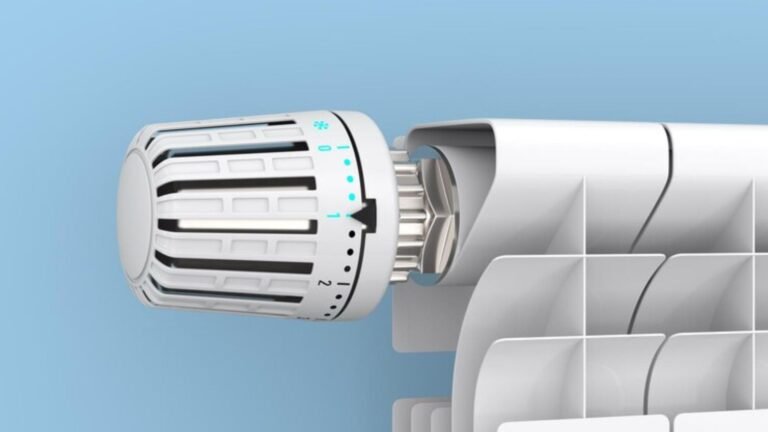Airflow efficiency is crucial in various fields, from automotive design to aerospace engineering. One innovative solution that has gained popularity for enhancing airflow is the NACA duct. In this article, we’ll explore what NACA ducts are, how they work, their advantages, and applications, along with a comprehensive FAQ section to address common queries.
What is a NACA Duct?
A NACA duct is a specific type of air intake design that optimizes airflow with minimal drag. Developed by the National Advisory Committee for Aeronautics (NACA) in the 1940s, these ducts are characterized by their streamlined shape, which allows air to flow smoothly into a vehicle or structure. The design is often used in aircraft and automotive applications but has also found relevance in HVAC systems and other engineering fields.
The Design Principles of NACA Ducts
NACA ducts utilize an airfoil shape, typically featuring a rounded leading edge and a tapered trailing edge. This design minimizes turbulence and drag, allowing for a more efficient flow of air. The key features include:
Smooth Curvature: The rounded edges help in reducing airflow separation, which is a major cause of drag.
Optimal Placement: Proper positioning of the duct can significantly enhance performance, ensuring that air enters at the correct angle.
Adjustable Sizing: Depending on the application, the size and shape of the duct can be adjusted to optimize performance for specific needs.
How NACA Ducts Work
NACA ducts function by harnessing the principles of fluid dynamics. When air flows over the duct, it experiences a pressure differential that draws air into the duct, even at relatively low speeds. Here’s how it works in more detail:
Airflow Interaction: As air moves over the curved surface, it speeds up over the top of the duct and slows down underneath, creating a low-pressure area.
Venturi Effect: This pressure difference acts like a vacuum, pulling air into the duct, enhancing airflow into the system it serves.
Minimized Drag: By maintaining a smooth airflow, NACA ducts’s reduce drag compared to traditional intake designs, which can lead to significant performance improvements.
Advantages of Using NACA Ducts
NACA ducts’s offer a range of benefits, making them a preferred choice in various applications:
Enhanced Aerodynamics
Due to their streamlined shape, NACA ducts’s can significantly reduce drag, which is particularly beneficial in high-speed environments like aviation and motorsport.
Improved Cooling Efficiency
In automotive applications, NACA ducts’s can direct cool air to vital components. Such as the engine and brakes, improving overall performance and safety.
Space Efficiency
NACA ducts’s can be integrated into the body of a vehicle or aircraft without protruding, which helps maintain a sleek design while still enhancing airflow.
Versatility
These ducts can be adapted for various applications, including aircraft wings. Car hoods, and even HVAC systems, making them a versatile solution in engineering.
Applications of NACA Ducts
NACA ducts’s are utilized in various industries due to their effective airflow management capabilities. Here are some notable applications:
Aerospace Engineering
In the aviation sector, NACA ducts’s are often integrated into aircraft designs to improve cooling for engines and electronic components. Their efficient airflow helps maintain optimal operating temperatures.
Automotive Industry
High-performance vehicles frequently use NACA ducts’s to channel air to brakes and engine intakes, enhancing both performance and safety. They are particularly popular in motorsports for their ability to reduce drag while improving cooling.
Marine Applications
NACA ducts’s can also be found in marine vessels, where they are used to direct airflow to engines and cooling systems, improving efficiency and performance on the water.
HVAC Systems
In heating, ventilation, and air conditioning systems, NACA ducts’s can be utilized to enhance airflow efficiency, ensuring consistent temperature control and energy savings.
Conclusion
NACA ducts’s represent a significant advancement in airflow management, offering improved aerodynamics and cooling efficiency across various industries. Their unique design minimizes drag while maximizing airflow, making them an ideal choice for applications in aerospace, automotive, marine, and HVAC systems. Whether you’re looking to enhance the performance of a vehicle or improve energy efficiency in a building, integrating NACA ducts’s into your design can lead to substantial benefits.
ALSO READ:Movie123: Your Ultimate Destination For Streaming Movies Online
FAQs
What materials are used to make NACA ducts?
NACA ducts can be made from various materials, including aluminum, fiberglass, and carbon fiber, depending on the application and required strength.
Can NACA ducts be retrofitted into existing designs?
Yes, NACA ducts can often be retrofitted into existing designs. Though modifications may be necessary to ensure proper integration and airflow optimization.
How do NACA ducts compare to traditional air intakes?
NACA ducts typically offer lower drag and improved airflow efficiency compared to traditional air intakes, making them a superior choice for high-performance applications.
Are NACA ducts effective at low speeds?
While NACA ducts are designed to excel at higher speeds. They can still provide benefits at lower speeds, particularly in improving cooling efficiency.
Can NACA ducts be used in residential applications?
Yes, NACA ducts can be adapted for use in residential HVAC systems to improve airflow and efficiency. Though their design may be modified to suit aesthetic and functional needs.

